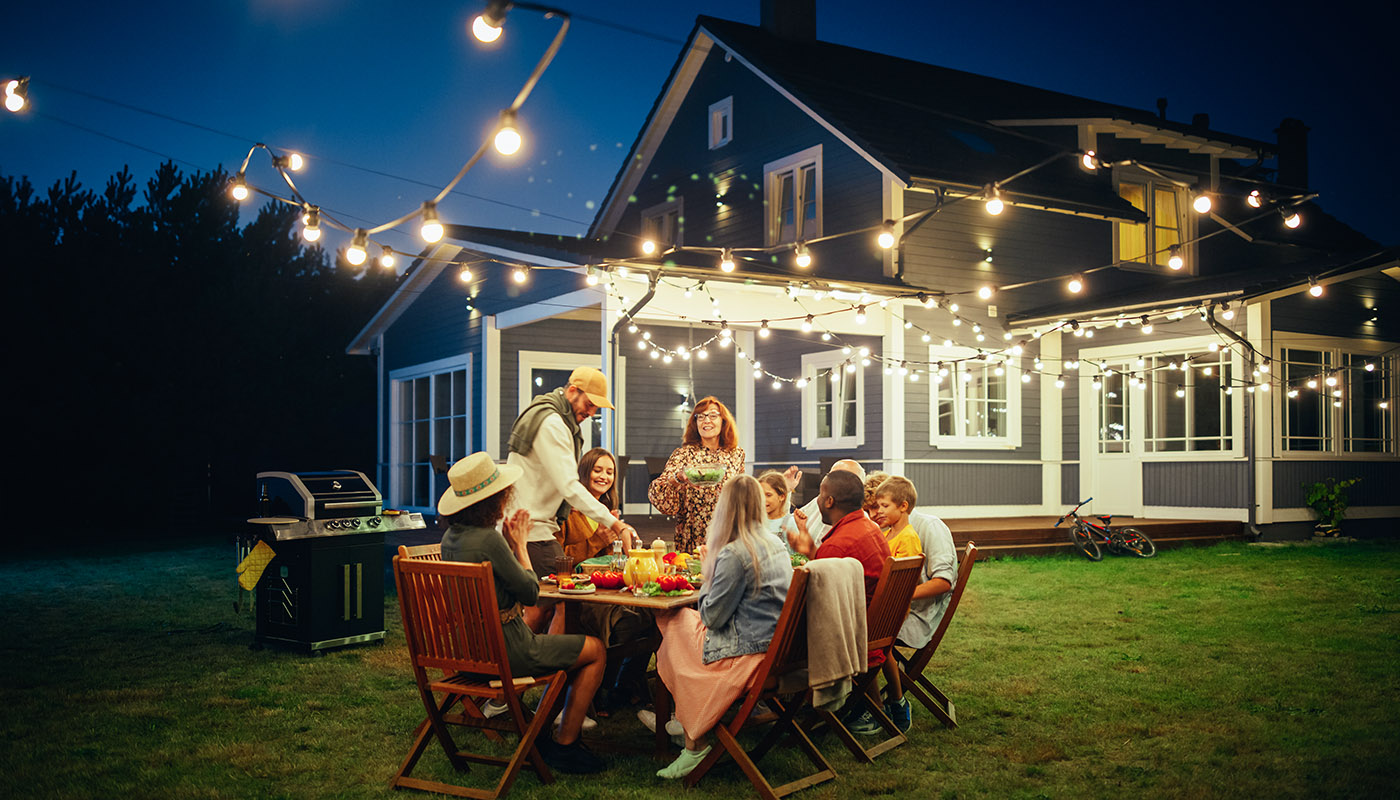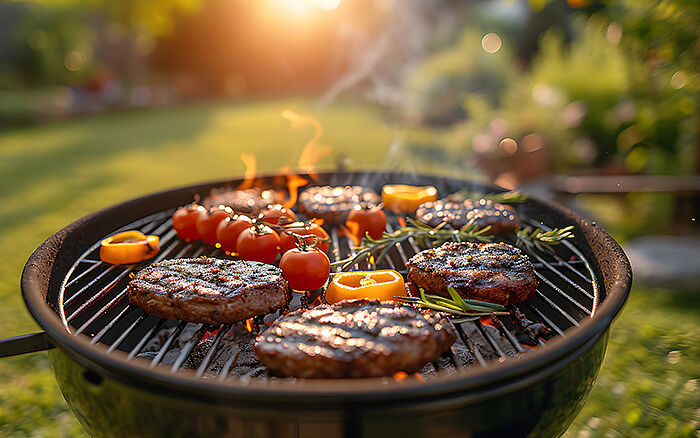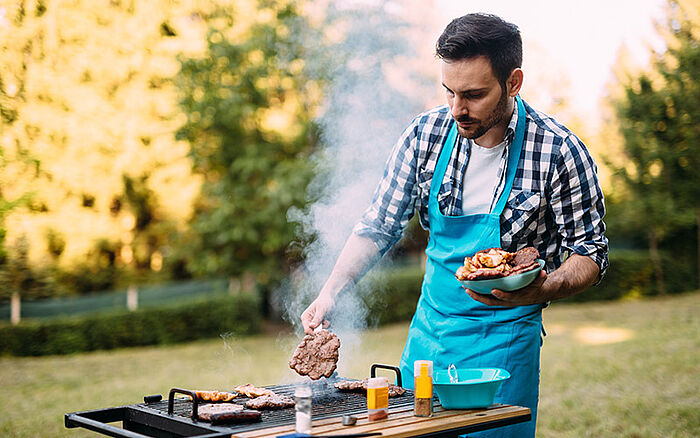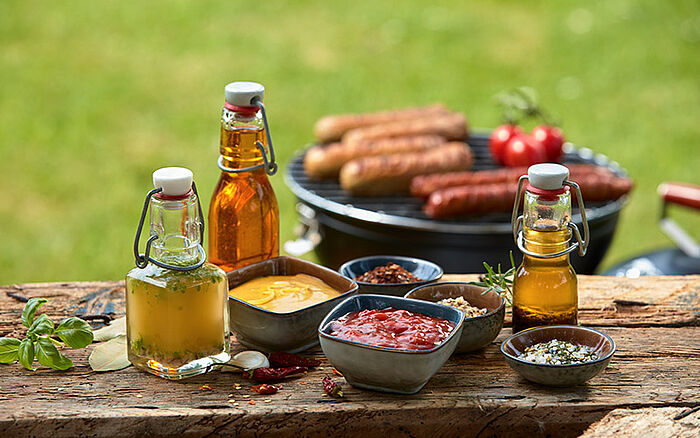
Everyday IP: Turning up the heat with summer barbecues
When the warm weather rolls in, the call of the backyard feast is almost irresistible. Sizzling sausages, the tang of smoky ribs and the friendly hum of conversation — it is the perfect recipe for culinary fun. But beyond flames and fixings, something else is working behind the scenes to make your barbecue possible: Intellectual Property (IP).
From the grills that sear your steaks to the bottles of ketchup balanced on the picnic table, patents, trademarks and trade secrets are everywhere, hiding in plain sight. Welcome to the intersection of outdoor cooking and serious innovation.
Igniting the spark of inspiration
The charcoal briquette was the invention that sparked a food revolution. In the early 20th century, Ellsworth Zwoyer received numerous patents for machines and techniques used to create compressed fuel briquettes. However, he was primarily concerned with pulverized coal, which produces a smoke unsuitably dirty for cooking.
Rather, it was the famous Henry Ford who saw the potential of using wood scraps to create low-cost charcoal. With the help of his cousin-in-law, Edward Kingsford, he turned a by-product of car manufacturing lines into a booming business. Originally marketed under the Ford brand, the charcoal briquette was renamed Kingsford Charcoal after its namesake's death, an enduring trademark that has been firing up BBQs for decades. And while the taste of charcoaled food has stood the test of time, the methods of grilling have evolved to serve up consistently tasty delights.
Innovation starts cooking with gas: kettle grills and beyond
If charcoal brought barbecue to lawns and patios everywhere, George Stephen made sure the method stuck. Frustrated with errant gusts flickering flames and causing ash to fly into his dinner, the metalworker at Weber Brothers Metal Works sought to improve the conventional open-topped box design. George Stephen took two halves of a buoy the company made, added vents and a grill grate, and thus, the Weber Kettle Grill was born. It was not just clever engineering; it was clever marketing. The distinctive dome-like shape became a design icon, setting the Weber apart from a sea of metal pans and boxes.

The word barbecue was introduced to Europeans by Gonzalo Fernández de Oviedo y Valdés in a 1535 account of his experiences in the West Indies. The indigenous "barbacoa" was a versatile term for a wooden lattice, though the only cooking use Oviedo described was for roasting people!
After the Second World War, suburbanization and the rise of disposable income sent grilling culture into overdrive. By the 1950s, cookouts were a standard feature of life in North America. Patent filings for grill improvements followed, making it easier to ignite fires, control heat and feed ever-bigger crowds.
Still, not to be eclipsed by the rustic charms of charcoal, various companies became interested in repurposing commercial gas broilers into patio-friendly contraptions. Notably, Melton Lancaster and William G. Wepfer of the Arkansas Louisiana Gas Company redesigned the charcoal grill in the 1960s to run on bottled propane, creating a more convenient, straightforward option that quickly gained widespread popularity.
Despite stiff competition in propane grilling, pellet grills joined the scene two decades later. Unlike gas barbecues, these solid-fueled fires offer a wood-smoked flavor that some say far outweighs the convenience of gas. The pellet innovation also bested its charcoal counterpart in ease of use and reliability, with the temperature and rate of burn controlled electronically. These nifty cookers added another layer of patented ingenuity to the BBQ arsenal, but grilling creativity did not end there.
A glowing market: infrared grilling and smart gadgets
Bill Best, founder of Thermal Engineering Corporation, pioneered infrared grills based on his own technology to dry paint on aircraft and locomotive parts more quickly. The advantage of relying solely on radiant heat from a ceramic burner was that food would not be dried out by hot gases rising from flames. Independently, Schwank Inc. took the gas infrared technology its founder invented in 1938 for outdoor heating and repurposed it for outdoor cooking in 1970. Today, the company's swanky overhead arrangements allow for extremely high temperatures and fast cooking times.
As technology evolved, grills themselves became smarter. Barbecue enthusiasts today can choose Wi-Fi-enabled smokers, app-controlled temperature monitors and voice-command assistants to check on those ribs while grabbing another beer. Once novel, these features are now affordable thanks to steady refinements and increasing competition, proving that the luxury of yesterday can become today's picnic staple.

Barbecuing techniques can be generally broken down into direct and indirect methods. In the former, food is cooked quickly over a source of heat such as charcoal or gas, while in the other approaches, offset burning slowly cooks food with smoke.
While the grill itself is an obvious requirement for a successful country-style banquet, there are unsung heroes, too. After all, what would a cookout be without the indispensable sides and sauces?
The condiment connection: trademarks, trade secrets and the big squeeze
No sizzling party is complete without a generous squirt of ketchup, a dollop of mustard or a swirl of tangy dressing. But behind these picnic-table mainstays are some fierce IP protections.
Trademarks protect brand names like Heinz, French's and Grey Poupon — ensuring that consumers know exactly which secret blend of spices they are enjoying. Interestingly, however, the famous recipes contained within are not usually protected by patents. Instead, they are often guarded as trade secrets, which rely on the formulas staying confidential, meaning no official government filings are required.
Of course, where there is ketchup, there is competition, and patents sometimes appear in unexpected ways.
Take the upside-down squeeze bottle. Solving the eternal frustration of waiting for viscous dressing to grudgingly plop onto your burger, the inverted container was not originally created for foodstuffs. In 1991, Paul Brown and his employee Tim Socier came up with a self-closing silicone valve for shampoo bottles. Soon, food makers, cosmetics companies and even NASA were figuratively knocking on the door of the small precision-molding shop in Midland, Michigan, to license their patent. In time, leading ketchup producer Heinz implemented the up-ended approach to adding sauces. The invention had proved to be a smash hit, and just four years after the breakthrough, Paul Brown sold his business for some $13 million USD.

Glassware is a tried-and-true container for home-brew flavor concoctions. Still, drizzling a little extra kick over dishes is one thing; shaking out the last stubborn splodges of dips or relishes is another, and can be sore and messy in equal measure.
Other BBQ paraphernalia are a bit more outside the box (and bottle) than iconic condiments. These next inventions are perhaps better suited to the eccentric backyard chef whose taste extends beyond questionable aprons.
Brilliant or just bizarre? Patented BBQ gadgets
Summer barbecues often lead to at least one guest or host showcasing a new tool or gizmo, convinced it is the future of grilling. Many of these devices have patents backing their ingenuity or oddity.
Introducing the barbecue fork with a flashlight attachment. Why? So you can poke at hot dogs under the stars with precision, naturally. Or how about a design patent for a glow-in-the-dark meat thermometer – because overcooking chicken under the moonlight is not a good time.
There is even a flashlight-powered rotisserie mechanism that can brighten up a quirky chef's day. For burger aficionados, specialized patty-forming tools let you prepare recipes with infused cheese or other fillings, bringing culinary resourcefulness right to your grill.
As mentioned, recipes themselves cannot be patented unless tied to a new apparatus or technical method – see KFC's process of producing fried chicken under pressure – but the tools that make cooking easier, faster or just plain weirder all have their place on the IP menu. That is the beauty of innovation. Practicality and strangeness can coexist, just like pineapple on roast pork.
Cooking up a storm of IP
The next time you are flipping steaks, squeezing out ketchup or marveling at the Bluetooth-connected smoker over the fence, remember that every summer BBQ is almost as much a feast of IP as it is of flavors. From charcoal patents to app-controlled grills and secret sauces, IP shapes the cookout experience in delicious and surprising ways.
If you have the next best thing since sliced burger buns, contact the Dennemeyer team to help protect your creation.
Filed in

Shine a light on how Intellectual Property (IP) rights help you enjoy the outdoors more safely by covering sunscreen.

From soft serve machines to crispy cones, discover how patents and trademarks shape the frozen treats we love.



